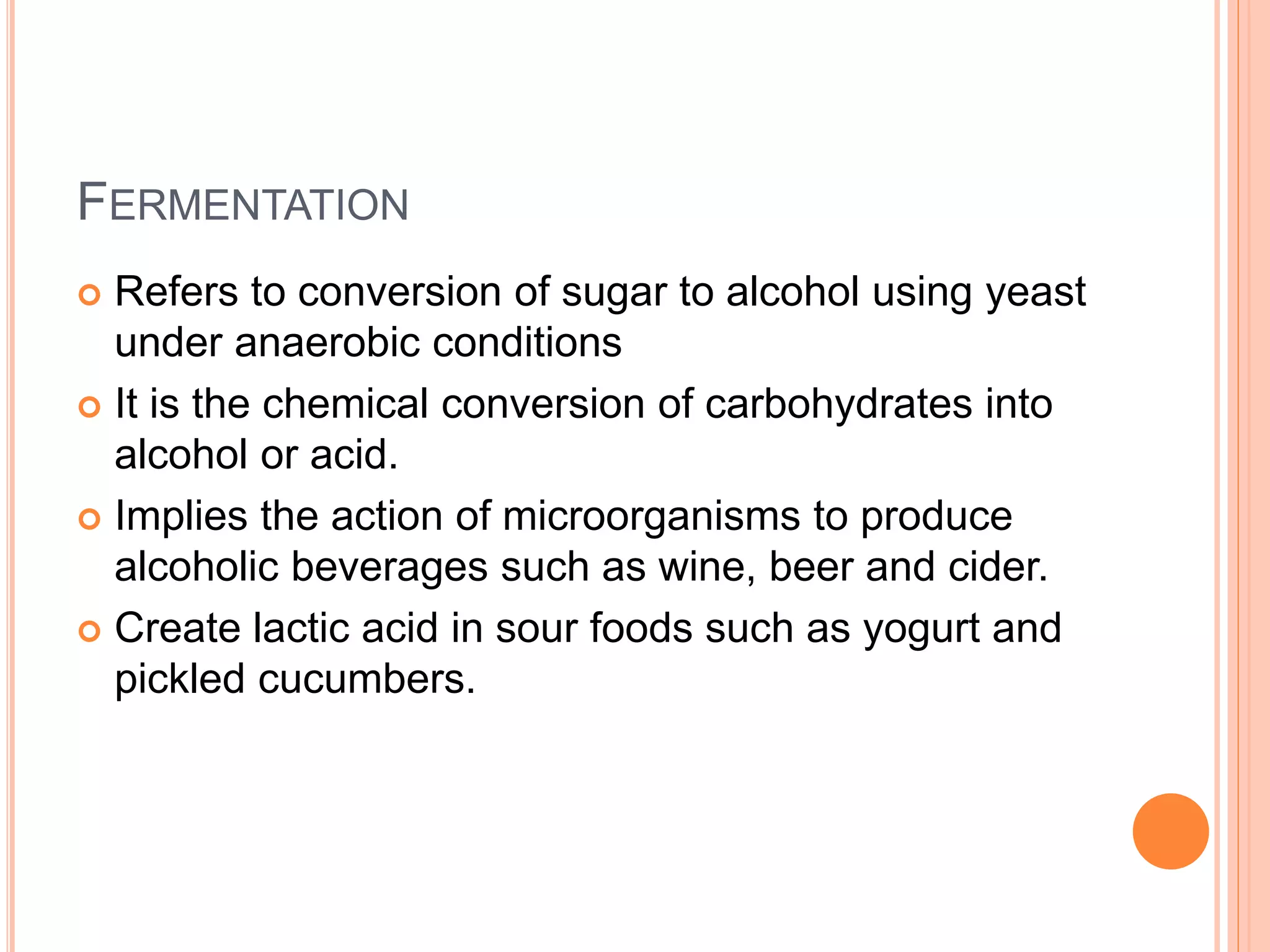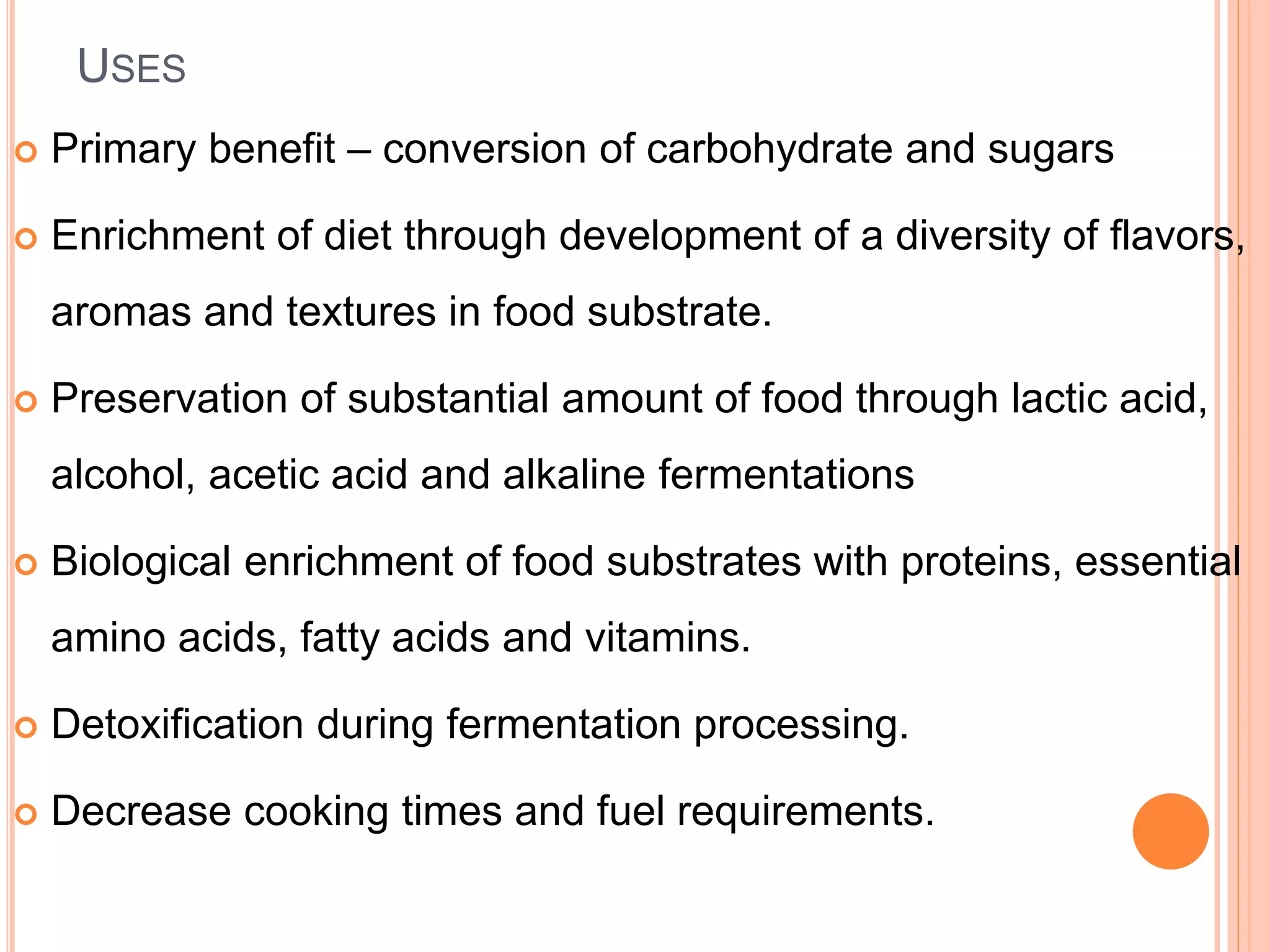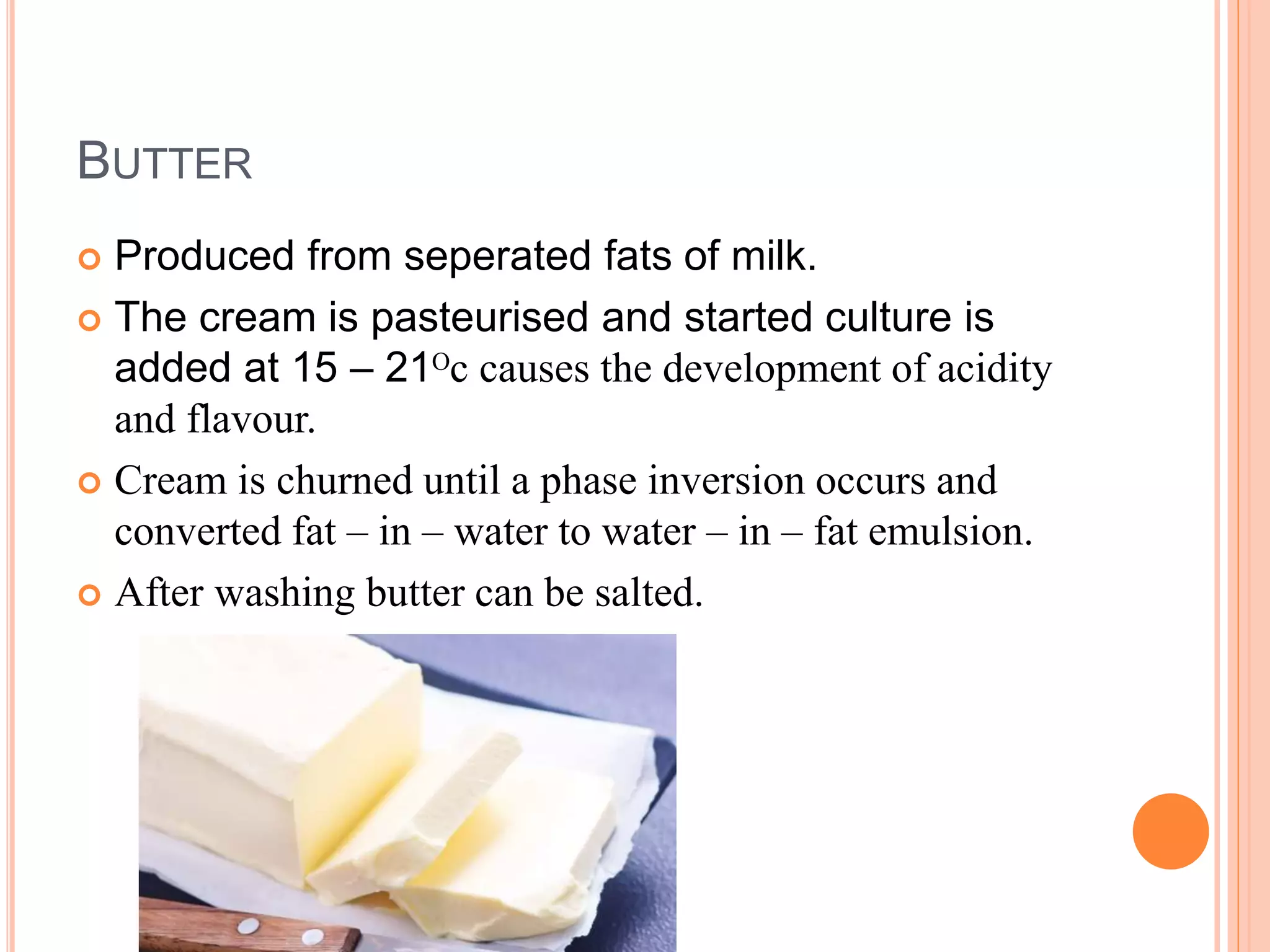Fermentation is one of the oldest food processing techniques used worldwide. It allows for the preservation of foods through the creation of acids or alcohols via microbial processes. Many traditional fermented foods have been consumed for thousands of years and play an important role in culture. Examples discussed include bread, cheese, wine, yogurt, pickles, soy sauce, and fermented vegetables and fruits from various regions. Fermentation increases shelf life and nutrient content while reducing cooking times and fuel needs. It has health benefits such as providing probiotics, vitamins, and peptides that can lower blood pressure.






















